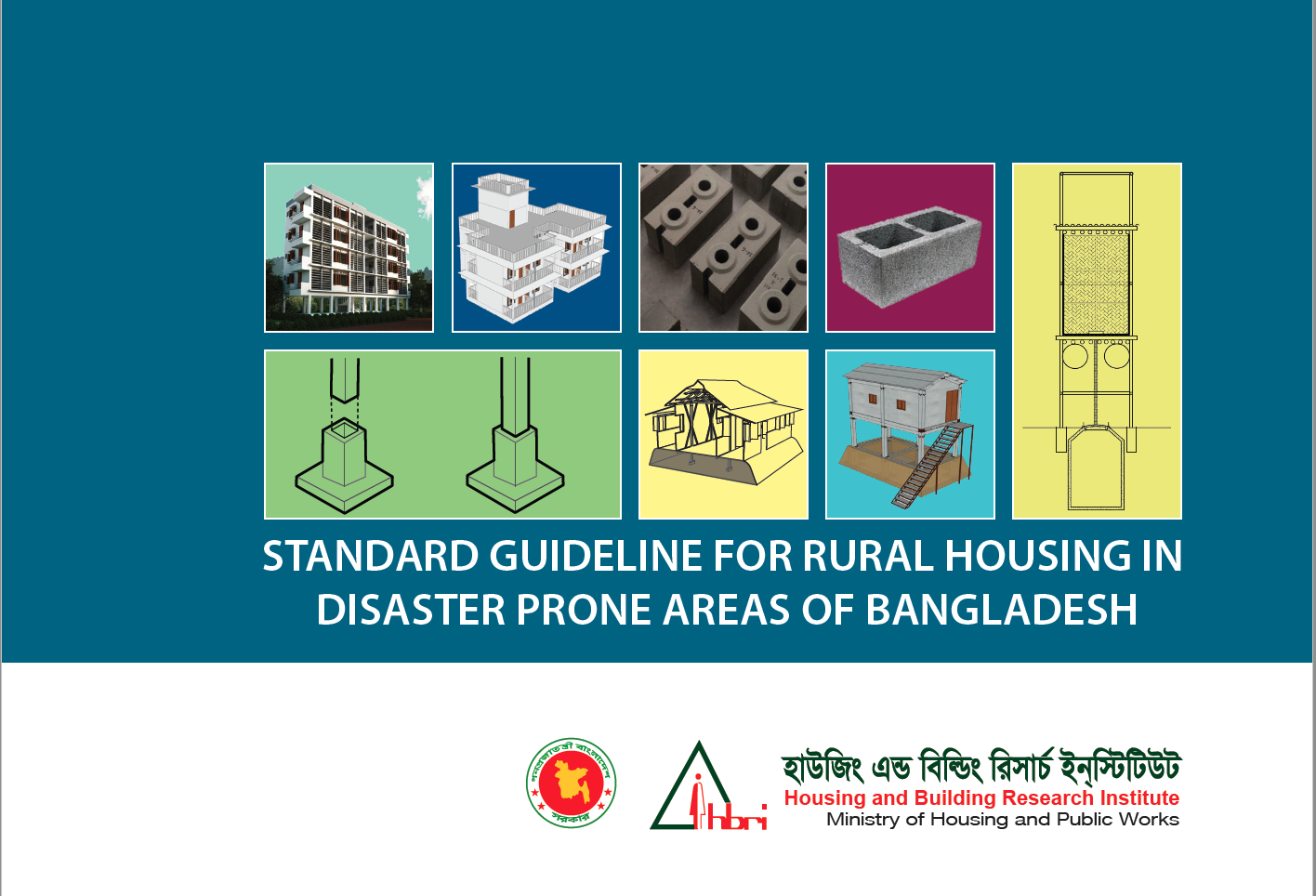Standard Guideline for Disaster Prone Housing of Bangladesh

Context and Rationale of the Guideline
Bangladesh is predisposed to numerous natural extremities due to its geographic location and meteorological features. Every year, the country faces multiple exposures to extreme natural phenomena that significantly affect the inhabitants’ overall livelihood. Predominantly housing is the most affected paradigm, facing the utmost adverse impacts of nature. Although Bangladesh has shown responsive approaches to disaster risk reduction and management, a lack of inclusive policy and guidelines at a national level obstructs the successful outcome of the overall process in most cases. To address the nation’s greater need, an inevitable demand has been felt to formulate a national guideline and design manual for rural areas, especially areas prone to natural extremities. Formulating this catalog aims to assist both the housing facilitators and end-users living in extreme natural conditions.
Key Facilitator
Friendship took the endeavor in November 2014, considering the need, willingness, and opportunities to improve the coordination and quality of future housing initiatives by developing the proposed national guidelines. The key facilitators regarding this approach are:
- The Department of Disaster Management (DDM)
- Housing and Building Research Institute (HBRI)
- Friendship
- Shelter Research Unit (SRU) of the International Federation of Red Cross and Red Crescent Societies (IFRC)
Target Groups
Natural phenomena like cyclones or floods become disasters because of a lack of awareness on how to construct disaster-resilient houses by using feasible technologies. It is intended that this design catalog will help in reducing the undue losses and hardships to the people living in areas exposed to extreme natural phenomena like a cyclone, flood, river erosion, etc. and that it becomes an important tool in making Bangladesh less vulnerable to disasters. This catalog aims to help the house owners and local artisans improve their skills and learn about disaster-resilient building technologies. It can also be used by site supervisors, engineers, concerned NGOs, donors, and other facilitators while providing the necessary housing assistance.
You can download the catalog down below.
